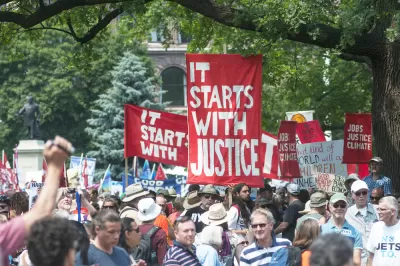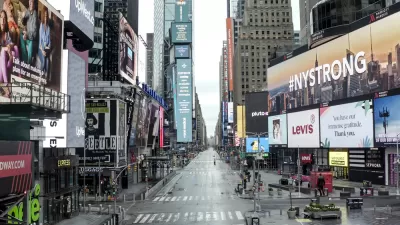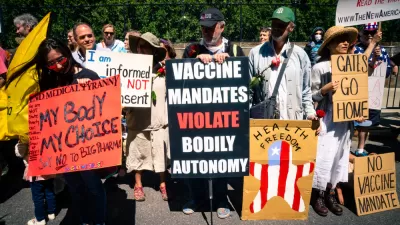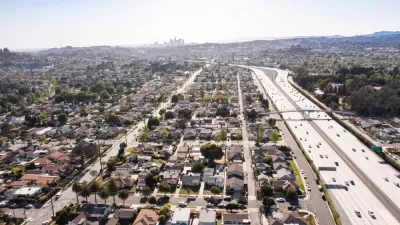Ecofascism, or the "promotion of authoritarian, facist [sic] ideologies for environmental good," is mistaken for virtue signaling as the coronavirus sweeps the globe.

Ecofascism (or, as Sierra Garcia describes it in an article for Grist, the dark side of the environmental movement) has become more visible and vocal as the world reels from the effects of the coronavirus pandemic.
"Minimizing or even encouraging human death and suffering so long as it helps the environment is an excellent example of the dark ideology — and yet variations on the coronavirus-is-good-for-the-climate theme have been cropping up more and more as the virus spreads," writes Garcia.
The purpose of Garcia's article is to highlight the shortcomings of this worldview, and the kind of social media messages that might inadvertently propagate the darker ideology as a misdirected expression of solidarity for the environment.
This stance has some serious flaws, like its disregard of the disproportionate impact different people and societies have on the environment, and its questionable assumption that human society and 'the planet' are somehow discrete and utterly separate actors. But the most disturbing facet of this argument is how it echoes strains of the environmentalist movement that have advocated for reducing nonwhite, non-Western populations.
Numerous examples of the racist connections between environmentalism, conservation, and population follow, along with a call to action to call out ecofascism when its identified in public and social media.
FULL STORY: ‘We’re the virus’: The pandemic is bringing out environmentalism’s dark side

Maui's Vacation Rental Debate Turns Ugly
Verbal attacks, misinformation campaigns and fistfights plague a high-stakes debate to convert thousands of vacation rentals into long-term housing.

Planetizen Federal Action Tracker
A weekly monitor of how Trump’s orders and actions are impacting planners and planning in America.

In Urban Planning, AI Prompting Could be the New Design Thinking
Creativity has long been key to great urban design. What if we see AI as our new creative partner?

King County Supportive Housing Program Offers Hope for Unhoused Residents
The county is taking a ‘Housing First’ approach that prioritizes getting people into housing, then offering wraparound supportive services.

Researchers Use AI to Get Clearer Picture of US Housing
Analysts are using artificial intelligence to supercharge their research by allowing them to comb through data faster. Though these AI tools can be error prone, they save time and housing researchers are optimistic about the future.

Making Shared Micromobility More Inclusive
Cities and shared mobility system operators can do more to include people with disabilities in planning and operations, per a new report.
Urban Design for Planners 1: Software Tools
This six-course series explores essential urban design concepts using open source software and equips planners with the tools they need to participate fully in the urban design process.
Planning for Universal Design
Learn the tools for implementing Universal Design in planning regulations.
planning NEXT
Appalachian Highlands Housing Partners
Mpact (founded as Rail~Volution)
City of Camden Redevelopment Agency
City of Astoria
City of Portland
City of Laramie





























